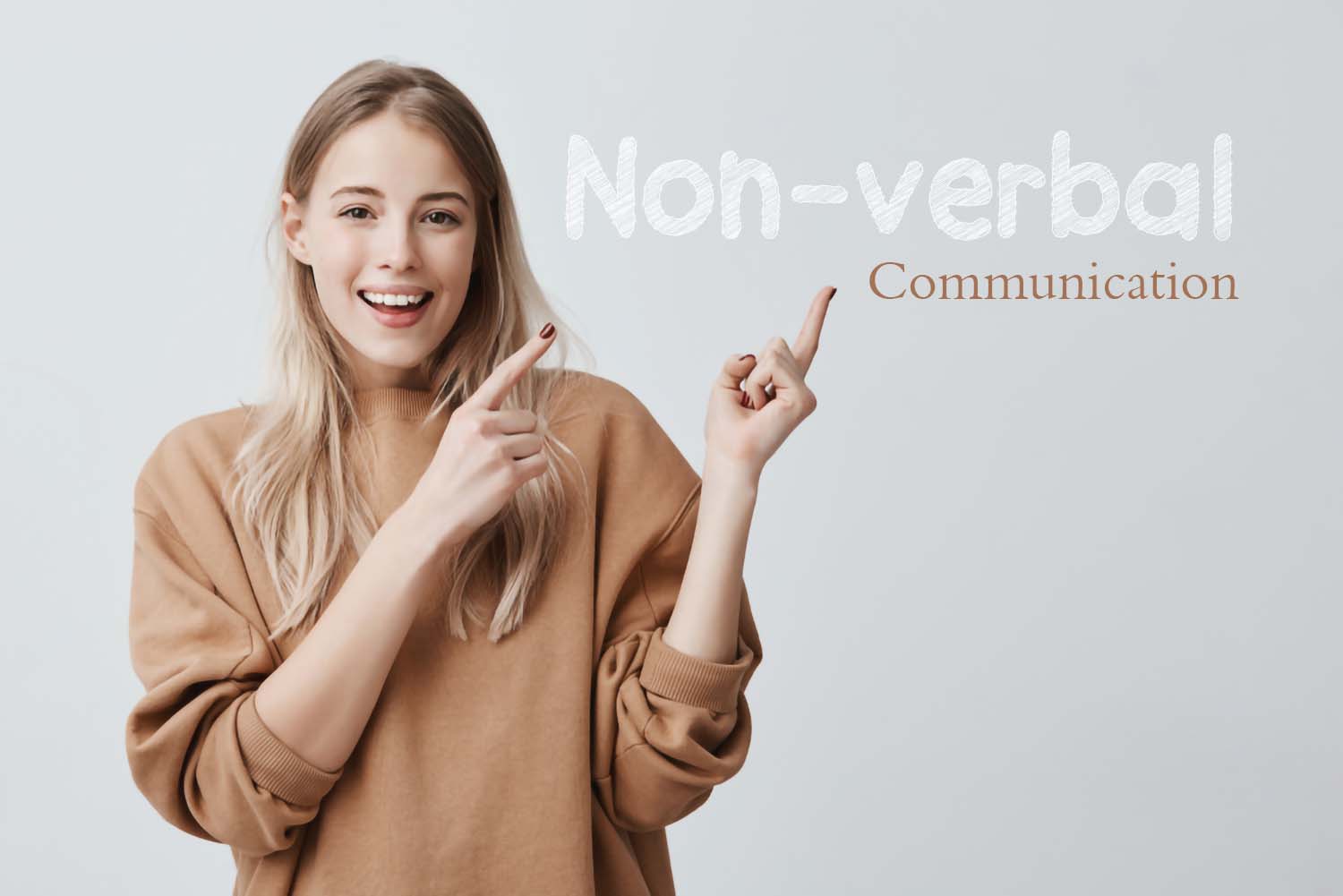Nonverbal communication refers to gestures, facial expressions, tone of voice, eye contact (or lack thereof), body language, posture, and other ways people can communicate without using language.
When you’re interviewing for a job or participating in a meeting, your nonverbal communication is almost as important as your verbal responses. Anthropologist Ray Birdwhistell’s study of kinesics found that over 65% of communication is nonverbal. (Source: The New York Times)
Why is important? Your nonverbal communication skills can create a positive (or a negative) impression. Crossed arms can seem defensive. Poor posture may appear unprofessional. A downward gaze or avoiding eye contact can detract from you being seen as confident.
Employers will evaluate what you do as well as what you say, and you can use your nonverbal communication skills to make the best impression. If your skills aren’t top-notch, you can practice them so you make a positive impression on everyone you meet in the workplace and beyond.
The Importance of Nonverbal Communication
Most candidates carefully prepare what they will say during interviews and networking meetings.
However, knowing what you will say is only part of the picture. Just as important is having an understanding of how to convey your messages through your body language. Your interviewing and networking success will be largely determined by the impression people get of you, and how they respond to what you say.
Nonverbal Communication Skills Examples
Want to brush up on your skills? Review this list of nonverbal skills and work on any areas where you think you could improve.
- Avoid slouching. Sit with your back straight up against the chair or lean slightly forward to convey engagement.
- Steer clear of smiles or laughter when messages are serious.
- Display some animation with your hands and facial expressions to project a dynamic presence. (But avoid talking with your hands excessively, which can appear unprofessional and unpolished.)
- Don’t bring your phone, a drink, or anything else that could distract you during an interview or meeting.
- Eliminate fidgeting and shaking of limbs.
- Establish frequent but not continuous or piercing eye contact with interviewers.
- Focus on the conversation.
- In a group interview, shift eye contact to the various speakers.
- Introduce yourself with a smile and a firm handshake. Be sure that your palms are dry.
- Keep your hands away from your face and hair.
- Listen carefully, and do not interrupt.
- Maintain open arms—folded arms can convey defensiveness.
- Modulate your vocal tone to express excitement and punctuate key points.
- Nod to demonstrate understanding.
- Observe the reaction of others to your statements.
- Read the nonverbal signals of others. Provide clarification if they look confused, and wrap up if they have heard enough.
- Refrain from forced laughter in response to humor.
- Avoid looking at the clock, your phone, or displaying any other signs of disinterest.
- Respect the amount of personal space preferred by your communication partners.
- Rotate eye contact with various speakers in group interviewing or networking situations.
- Shake hands firmly without excessive force.
- Show that you’re interested in what the interviewer is telling you.
- Smile to indicate that you are amused or pleased with the conversation.
- Stay calm even when you’re nervous.
- Steer clear of monotone delivery.
- Wait until the person is done talking to respond.
Communicating at Job Interviews
Your nonverbal communications during a job interview can either support the tone of your conversation or leave the interviewer wondering whether you’re all talk and no substance. Displaying nonverbal behaviors that are a match for your messages can help you to convince employers that you are genuinely interested in the job and suited for the work.
Another hiring factor is the subject’s apparent ability to relate effectively with clients, co-workers, and other stakeholders.
For example, subtly mirroring interviewers’ body language can make you appear more trustworthy to them. In the same vein, lack of eye contact is a sign of low confidence and an inability to truly engage with others.
In general, what’s most important is to be positive and engaging. If you feel confident about your ability to do the job and know you’ll be an asset to the employer, you can show that by your actions as well as your words.
Practice Makes Interview Perfect
Practicing your delivery of messages through role-playing with counselors and friends can help you to hone your nonverbal communication skills. Try recording your practice sessions so you can analyze some of the nuances of your style. Here are some tips to practice interviewing.
Spending some time practicing will ensure your skills are up to par. You’ll also feel more comfortable when you’re interviewing or networking if you’ve spent time getting ready. The less nervous you are, the better you’ll be able to communicate—both verbally and nonverbally.
Communicating at Work
In many occupations, establishing credibility and trust is a significant success factor. Using nonverbal behavior (like eye contact, for instance) can further demonstrate your sincerity and engaging personality.






